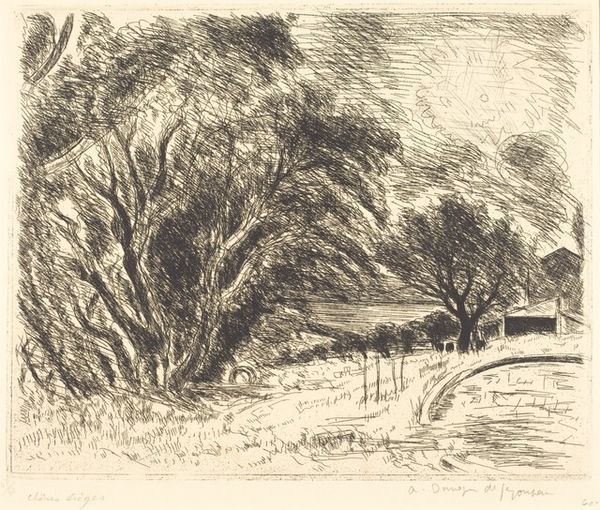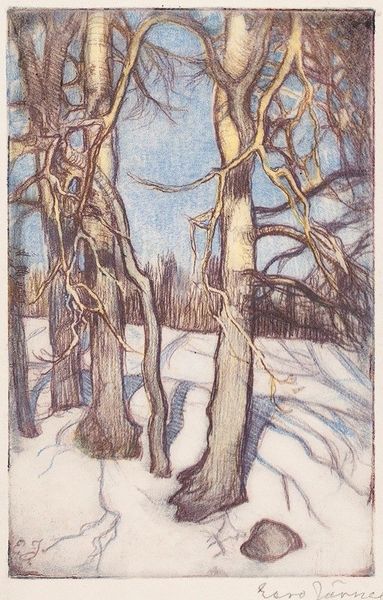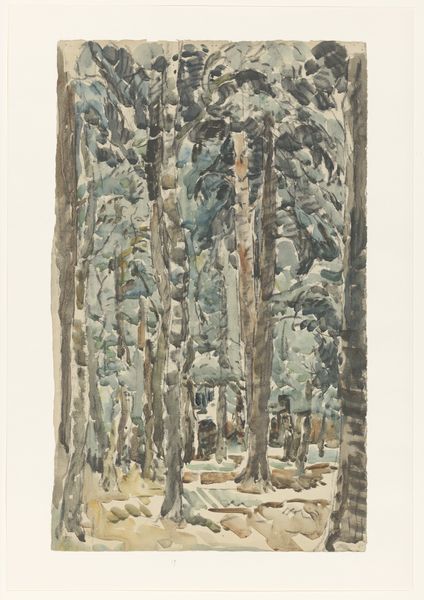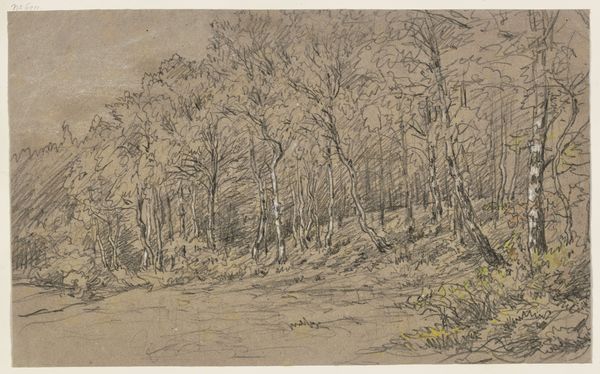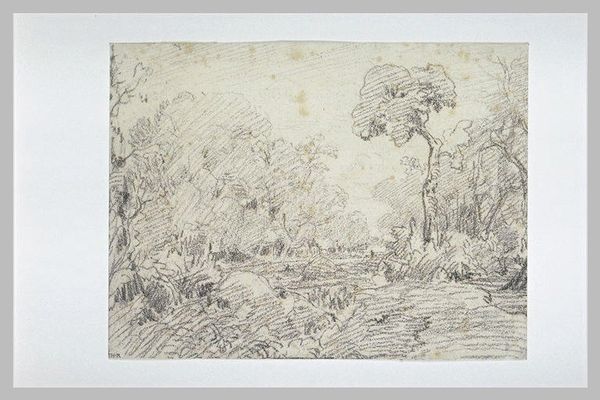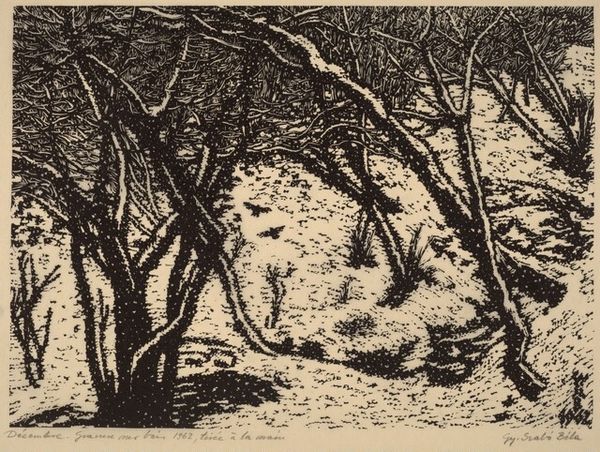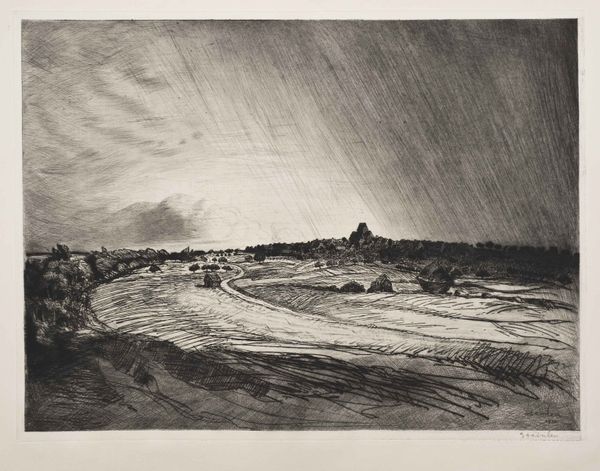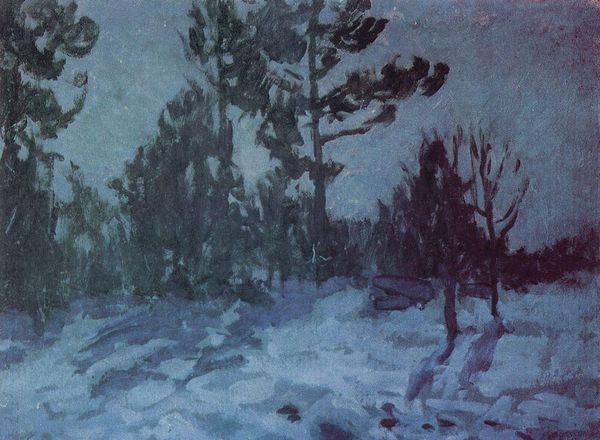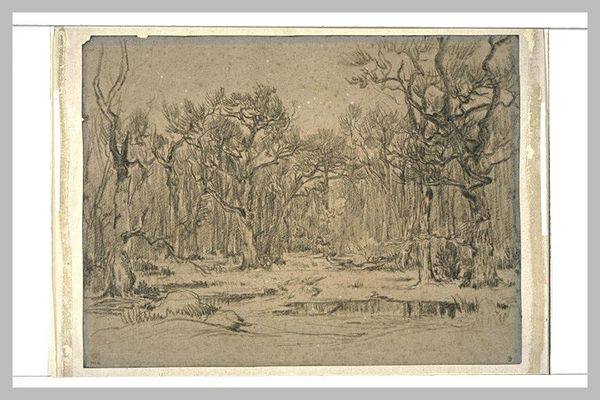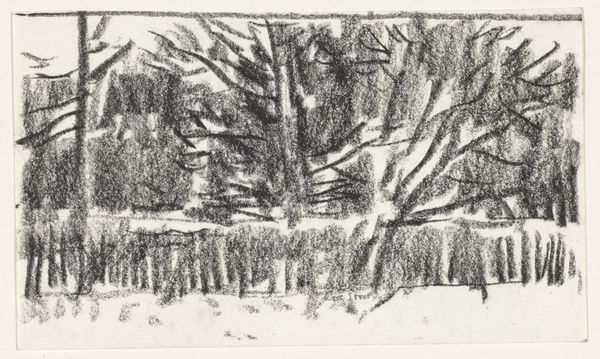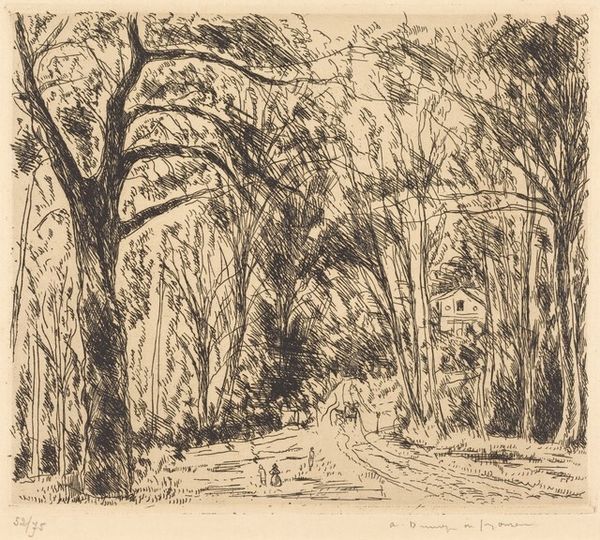
Copyright: Public domain
Editor: We're looking at "Snowy Path through a Wood in the Forest of Fontainebleau," a watercolor painted in 1863 by Theodore Rousseau. The scene is… chilly, obviously! It almost feels monochrome, with the muted blues and browns. There's a stark, sort of lonely beauty here. What jumps out at you when you look at this piece? Curator: Lonely is a great word! I think what grabs me is the light, or perhaps the *suggestion* of light. You see, Rousseau isn't really rendering light in a conventional, representational way. Instead, it's almost as if the blank parts of the paper *are* the light, shimmering on the snow, peeking through the skeletal branches. It's evocative, don't you think? Almost dreamlike. Editor: Absolutely. It's not photo-realistic. It's more about capturing a feeling. So, is that what makes it romantic, the mood? Curator: Partly, but it's also Rousseau’s reverence for nature itself. Consider the title: it isn't simply 'Snowy Path,' it's 'Snowy Path through a Wood in the *Forest of Fontainebleau*.' This place had a powerful draw for him and his contemporaries. They saw in it a sort of unspoiled Eden. Rousseau wasn’t just painting a landscape; he was inviting us to step into a sacred space. Or, perhaps a haunted one. Doesn't that muted palette give you the shivers? Editor: It definitely adds a certain drama. So, he’s romanticizing a real place by amplifying the mood and almost, like, stripping away some of the detail? Curator: Precisely! It is interesting, isn’t it, how an artist can reveal so much more by showing us less. And sometimes, it truly is those quieter, subdued paintings that stick with us, resonating on a deeply emotional level. Editor: That makes perfect sense. Thanks. I feel like I can appreciate the subtlety much more now.
Comments
No comments
Be the first to comment and join the conversation on the ultimate creative platform.


